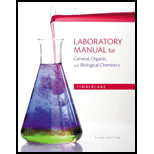
Concept explainers
a.
To determine:
The amino acid sequence for the given
Introduction:
The genetic information in a
Mutation is a change in the nucleotide sequence of genetic material either due to the mistake in replication or due environmental factors.
b.
To determine:
The amino acid sequence if mutation changes CCU codon to the AUU codon and explain whether it will affect the protein function.
Introduction:
The genetic information in a nucleotide sequence is present in the form of codons. Each codon is a three base sequence in the
Mutation is a change in the nucleotide sequence of genetic material either due to the mistake in replication or due environmental factors.
c.
To determine:
The amino acid sequence if mutation changes CGA codon to the AGA codon and explain whether it will affect the protein function.
Introduction:
The genetic information in a nucleotide sequence is present in the form of codons. Each codon is a three base sequence in the
Mutation is a change in the nucleotide sequence of genetic material either due to the mistake in replication or due environmental factors.
d.
To determine:
The protein sequence if a mutation changes AAA to UAA.
Introduction:
The genetic information in a nucleotide sequence is present in the form of codons. Each codon is a three base sequence in the
Mutation is a change in the nucleotide sequence of genetic material either due to the mistake in replication or due environmental factors.
e.
To determine:
The protein sequence if an A is added to the beginning of the chain and the sequence changes to
Introduction:
The genetic information in a nucleotide sequence is present in the form of codons. Each codon is a three base sequence in the
Mutation is a change in the nucleotide sequence of genetic material either due to the mistake in replication or due environmental factors.
f.
To determine:
The protein sequence if C is removed from the beginning of the chain and the sequence changes to
Introduction:
The genetic information in a nucleotide sequence is present in the form of codons. Each codon is a three base sequence in the
Mutation is a change in the nucleotide sequence of genetic material either due to the mistake in replication or due environmental factors.
Want to see the full answer?
Check out a sample textbook solution
Chapter 11 Solutions
EBK LABORATORY MANUAL FOR GENERAL, ORGA
- Indicate the products obtained by mixing 2,2-dimethylpropanal with acetaldehyde and sodium ethoxide in ethanol.arrow_forwardSynthesize 2-Ethyl-3-methyloxirane from dimethyl(propyl)sulfonium iodide using the necessary organic or inorganic reagents. Draw the structures of the compounds.arrow_forwardSynthesize 2-Hydroxy-2-phenylacetonitrile from phenylmethanol using the necessary organic or inorganic reagents. Draw the structures of the compounds.arrow_forward
- Synthesize N-Methylcyclohexylamine from cyclohexanol using the necessary organic or inorganic reagents. Draw the structures of the compounds.arrow_forwardSynthesize N-Methylcyclohexylamine from cyclohexanol using the necessary organic or inorganic reagents. Draw the structures of the compounds.arrow_forwardIf possible, please provide the formula of the compound 3,3-dimethylbut-2-enal.arrow_forward
- Synthesize 1,4-dibromobenzene from acetanilide (N-phenylacetamide) using the necessary organic or inorganic reagents. Draw the structures of the compounds.arrow_forwardIndicate the products obtained by mixing (3-oxo-3-phenylpropyl)triphenylphosphonium bromide with sodium hydride.arrow_forwardWe mix N-ethyl-2-hexanamine with excess methyl iodide and followed by heating with aqueous Ag2O. Indicate the major products obtained.arrow_forward
- Indicate the products obtained by mixing acetophenone with iodine and NaOH.arrow_forwardIndicate the products obtained by mixing 2-Propanone and ethyllithium and performing a subsequent acid hydrolysis.arrow_forwardIndicate the products obtained if (E)-2-butenal and 3-oxo-butanenitrile are mixed with sodium ethoxide in ethanol.arrow_forward
 General, Organic, and Biological ChemistryChemistryISBN:9781285853918Author:H. Stephen StokerPublisher:Cengage Learning
General, Organic, and Biological ChemistryChemistryISBN:9781285853918Author:H. Stephen StokerPublisher:Cengage Learning Organic And Biological ChemistryChemistryISBN:9781305081079Author:STOKER, H. Stephen (howard Stephen)Publisher:Cengage Learning,
Organic And Biological ChemistryChemistryISBN:9781305081079Author:STOKER, H. Stephen (howard Stephen)Publisher:Cengage Learning,
 Chemistry & Chemical ReactivityChemistryISBN:9781337399074Author:John C. Kotz, Paul M. Treichel, John Townsend, David TreichelPublisher:Cengage Learning
Chemistry & Chemical ReactivityChemistryISBN:9781337399074Author:John C. Kotz, Paul M. Treichel, John Townsend, David TreichelPublisher:Cengage Learning Chemistry & Chemical ReactivityChemistryISBN:9781133949640Author:John C. Kotz, Paul M. Treichel, John Townsend, David TreichelPublisher:Cengage Learning
Chemistry & Chemical ReactivityChemistryISBN:9781133949640Author:John C. Kotz, Paul M. Treichel, John Townsend, David TreichelPublisher:Cengage Learning Organic ChemistryChemistryISBN:9781305580350Author:William H. Brown, Brent L. Iverson, Eric Anslyn, Christopher S. FootePublisher:Cengage Learning
Organic ChemistryChemistryISBN:9781305580350Author:William H. Brown, Brent L. Iverson, Eric Anslyn, Christopher S. FootePublisher:Cengage Learning





